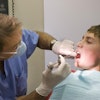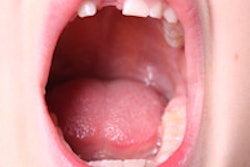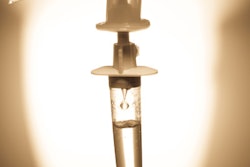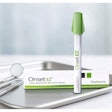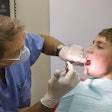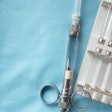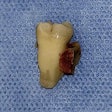
Should children who need both dental and medical procedures that require general anesthesia have the procedures completed under one anesthesia session?
Researchers wondered if limiting exposure to both anesthesia and surgery may be beneficial for the patients, and their families, and they conducted a 55-patient retrospective review. They presented their findings at the recent American Society of Anesthesiologists' 2016 Anesthesiology annual meeting in Chicago.
"While surgery and anesthesia are safer than they've ever been, limiting exposure is preferable, especially in children, because there may be sensitivities or a greater risk of anesthesia-related complications," stated lead study author Vidya Raman, MD, in a press release.
Dr. Raman is the director of preadmission testing at Nationwide Children's Hospital and a clinical associate professor at the Ohio State University Medical Center in Columbus.
One sedation session
Children who need general sedation for procedures such as teeth extraction may also need to have their tonsils removed or have an MRI scan for nondental reasons. The study authors proposed that it could be beneficial for pediatric patients to have all procedures done in one sedation session rather than undergoing several such sessions. Such combined procedures could have safety and financial benefits, as well as help parents struggling under time constraints.
“It can be logistically complex to schedule several procedures at once, but combining them can decrease costs and pleases parents.”
The researchers found 55 combined dental and surgical general anesthesia cases to review (29 girls; median age 59 months). The median number of procedures completed was three. The researchers studied postoperative complications, the need for unplanned postoperative admission, and other factors. The most common procedures performed in combination were tonsillectomy and adenoidectomy and also ear tube insertion and bronchoscopy. Extractions were the most common dental procedure (33 procedures) followed by hygiene-only procedures (3) and "other" (18).
The researchers found that 87% of the children had no complications. Seven children (13%) did have perioperative complications (vomiting, fever, pain, and pneumonia), with four of these seven patients eventually hospitalized for perioperative concerns. There were five children with complications in the extractions group and one in each of the hygiene-only and other groups. The majority of patients admitted were at increased risk of hospitalization because of severe systemic disease, the authors noted.
They also reported that combining procedures saved an average of 30% per patient, or a savings of about $165,000 for these 55 patients.
A 2007 study in Pediatric Dentistry researched a similar hypothesis. It included 120 patients (98% special healthcare needs) ranging in age from 2 years to 21 years, and the researchers found the estimated mean savings for patients receiving dentistry and third-molar extractions in combination were 312 minutes and $2,177.
"Combining care offers an economical vehicle for providing medical and dental care to patients needing multiple procedures," the authors of the 2007 study concluded.
Communication necessary
The authors of the current study noted that combining procedures was complicated and required communication among parents, dentists, and physicians. They also warned that some procedures, such as those with an increased infection risk and heart surgeries, should not be combined.
"It can be logistically complex to schedule several procedures at once, but combining them can decrease costs and pleases parents, because their children don't have to undergo multiple recoveries and can return to school and activities faster," Dr. Raman stated.



